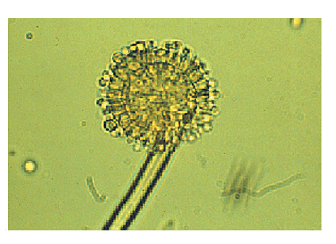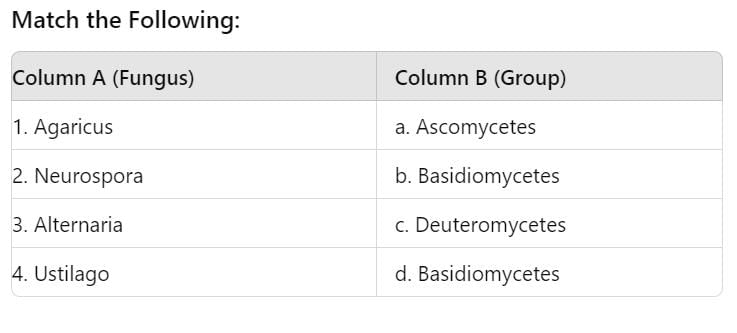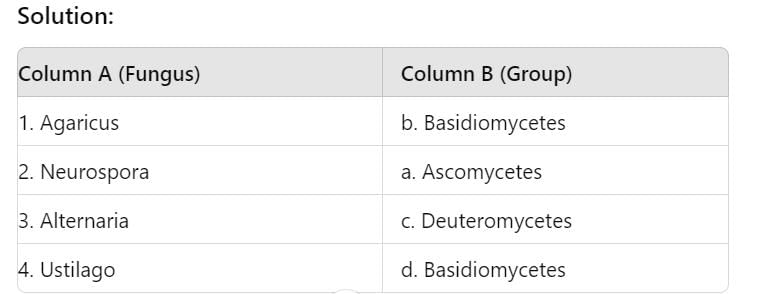NEET Exam > NEET Tests > Biology Class 11 > Test: Kingdom Fungi - NEET MCQ
Test: Kingdom Fungi - NEET MCQ
Test Description
15 Questions MCQ Test Biology Class 11 - Test: Kingdom Fungi
Test: Kingdom Fungi for NEET 2025 is part of Biology Class 11 preparation. The Test: Kingdom Fungi questions and answers have been
prepared according to the NEET exam syllabus.The Test: Kingdom Fungi MCQs are made for NEET 2025 Exam. Find important
definitions, questions, notes, meanings, examples, exercises, MCQs and online tests for Test: Kingdom Fungi below.
Solutions of Test: Kingdom Fungi questions in English are available as part of our Biology Class 11 for NEET & Test: Kingdom Fungi solutions in
Hindi for Biology Class 11 course. Download more important topics, notes, lectures and mock
test series for NEET Exam by signing up for free. Attempt Test: Kingdom Fungi | 15 questions in 15 minutes | Mock test for NEET preparation | Free important questions MCQ to study Biology Class 11 for NEET Exam | Download free PDF with solutions
Test: Kingdom Fungi - Question 1
Identify the incorrect statement about the diagram of the fungi given below -


Detailed Solution for Test: Kingdom Fungi - Question 1
Test: Kingdom Fungi - Question 2
Assertion(A): Deuteromycetes are called imperfect fungi.
Reason(R): These fungi have autotrophic mode of nutrition .
Reason(R): These fungi have autotrophic mode of nutrition .
Detailed Solution for Test: Kingdom Fungi - Question 2
Detailed Solution for Test: Kingdom Fungi - Question 3
Detailed Solution for Test: Kingdom Fungi - Question 4
Detailed Solution for Test: Kingdom Fungi - Question 5
Detailed Solution for Test: Kingdom Fungi - Question 6
Test: Kingdom Fungi - Question 7
Identify the group of fungi that is not correctly matched with all the characters given below:
Detailed Solution for Test: Kingdom Fungi - Question 7
Detailed Solution for Test: Kingdom Fungi - Question 8
Detailed Solution for Test: Kingdom Fungi - Question 9
Detailed Solution for Test: Kingdom Fungi - Question 10
Test: Kingdom Fungi - Question 11
Which of the following is not true regarding the reproduction and life cycle of basidiomycetes?
Detailed Solution for Test: Kingdom Fungi - Question 11
Detailed Solution for Test: Kingdom Fungi - Question 12
Test: Kingdom Fungi - Question 13
What are the three main steps involved in the sexual cycle in sequence?
Detailed Solution for Test: Kingdom Fungi - Question 13
Test: Kingdom Fungi - Question 14
What is the term for the long, slender thread-like structures that make up the body of fungi?
Detailed Solution for Test: Kingdom Fungi - Question 14
Detailed Solution for Test: Kingdom Fungi - Question 15
|
180 videos|367 docs|148 tests
|
Information about Test: Kingdom Fungi Page
In this test you can find the Exam questions for Test: Kingdom Fungi solved & explained in the simplest way possible.
Besides giving Questions and answers for Test: Kingdom Fungi, EduRev gives you an ample number of Online tests for practice

















